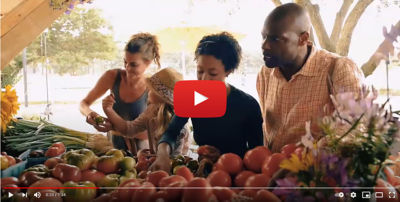Causal Agent
Colletotrichum capsici, C. gloeosporioides, C. coccodes, C. acutatum.
Distribution
Worldwide
Symptoms
Anthracnose affects all above-ground parts of peppers during any stage of growth. Seedling infection may be confined to cotyledons and not spread. Necrotic gray to brown spots may develop on leaves and stems. Fruit lesions are the most economically important aspect of this disease. Fruit symptoms begin as water-soaked areas that turn tan or brown. Lesions may be small and circular, or coalesce to cover large areas of the fruit. Under moist conditions, pink, salmon or orange masses of spores are formed, usually in concentric rings. Depending on the Colletotrichum species present, black or brown filamentous structures may be visible in the lesion. Anthracnose can affect both green and ripe fruit, but symptoms are usually not visible until fruit ripen and turn red.
 Anthracnose lesion on green fruit.
Anthracnose lesion on green fruit.
 Coalescing lesions with salmon-colored spores.
Coalescing lesions with salmon-colored spores.
Conditions for Development
Warm, wet weather generally favors infection and development of symptoms. Depending on the species of Colletotrichum present, optimal temperatures for infection range from 20° to 27° C (68° to 81° F). Free moisture is necessary for infection. Fog and dew are conducive to disease development. Rain disseminates the pathogen’s spores and often leads to severe losses, especially if fruit are wounded. These fungi can survive in infected seed and persist in leaf or stem lesions in plant debris for long periods of time.
Control
This disease can be managed by sowing good quality seed, rotating out of solanaceous crops for two to three years, removing weeds and infected debris, and choosing fields that drain well. Minimize fruit wounds by controlling insects. Copper fungicides are available, but have limited economical value for controlling this disease.



